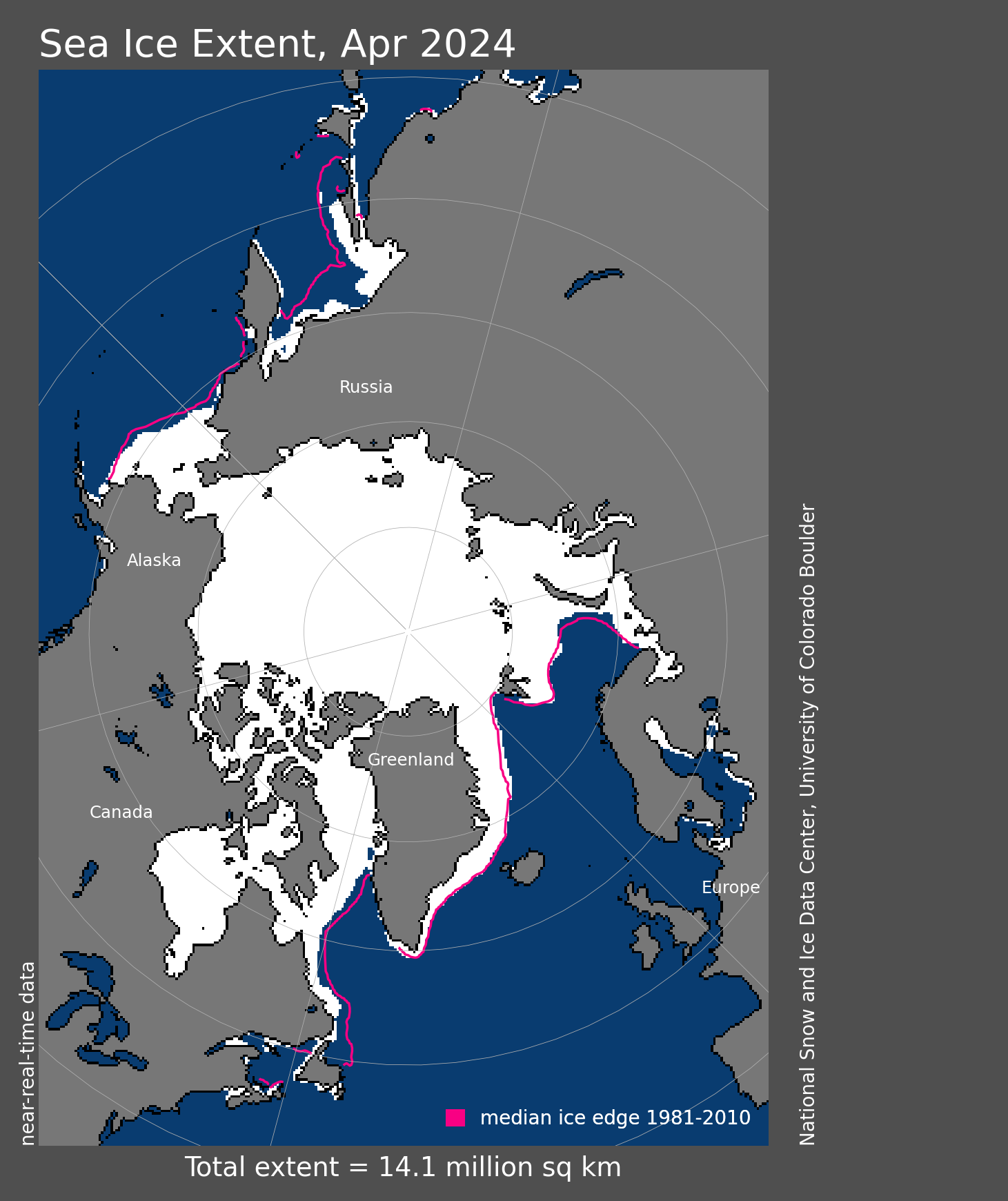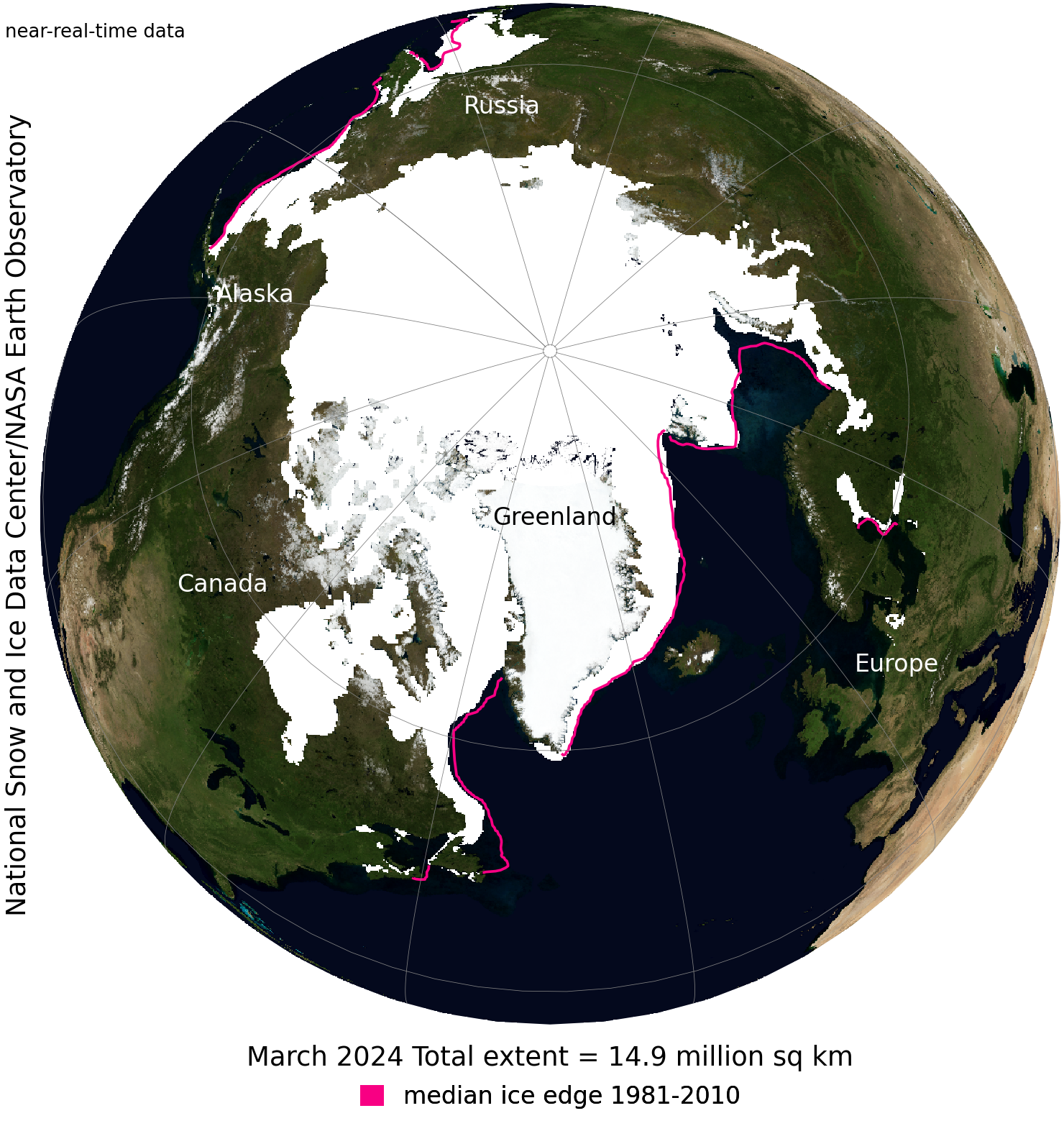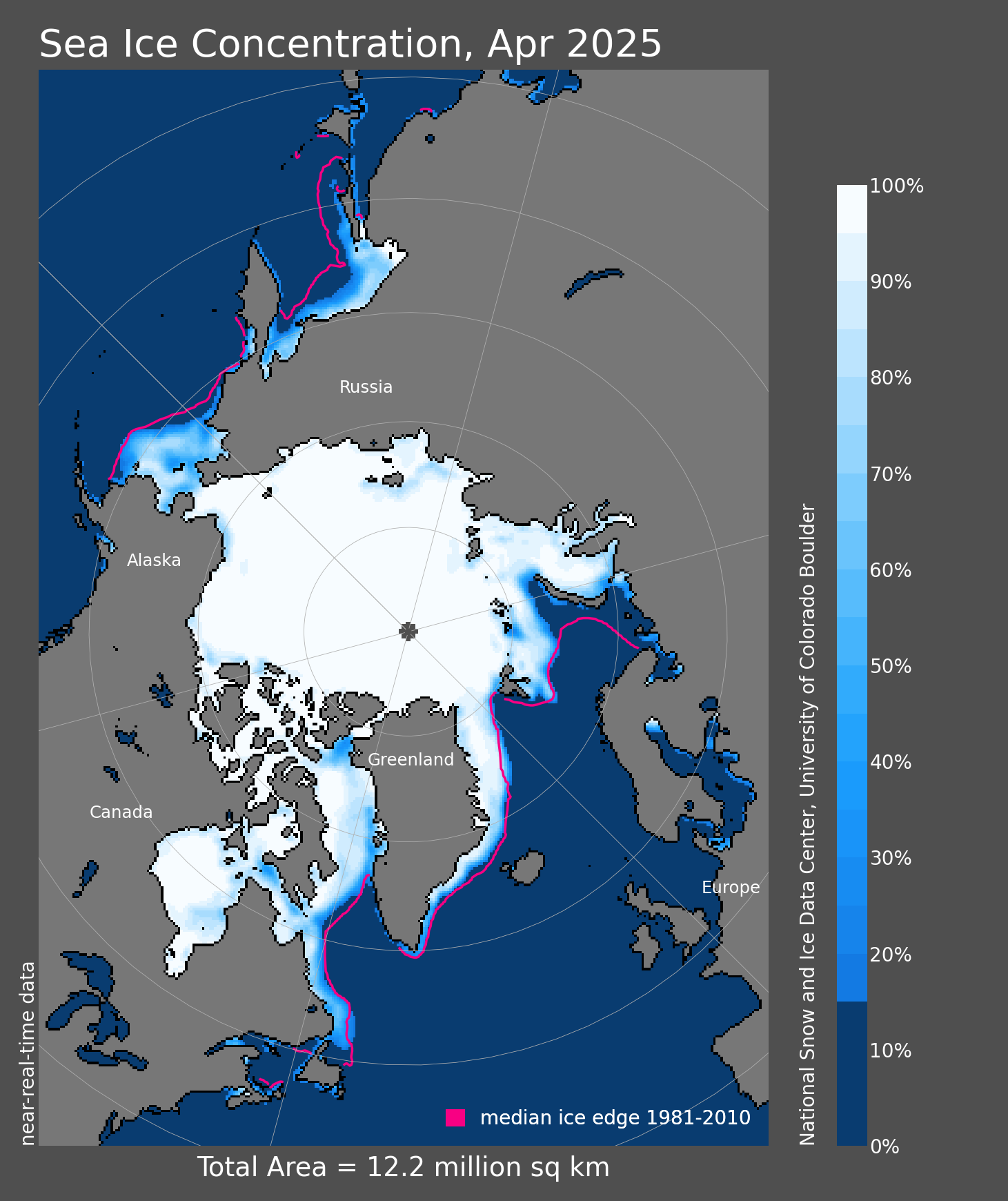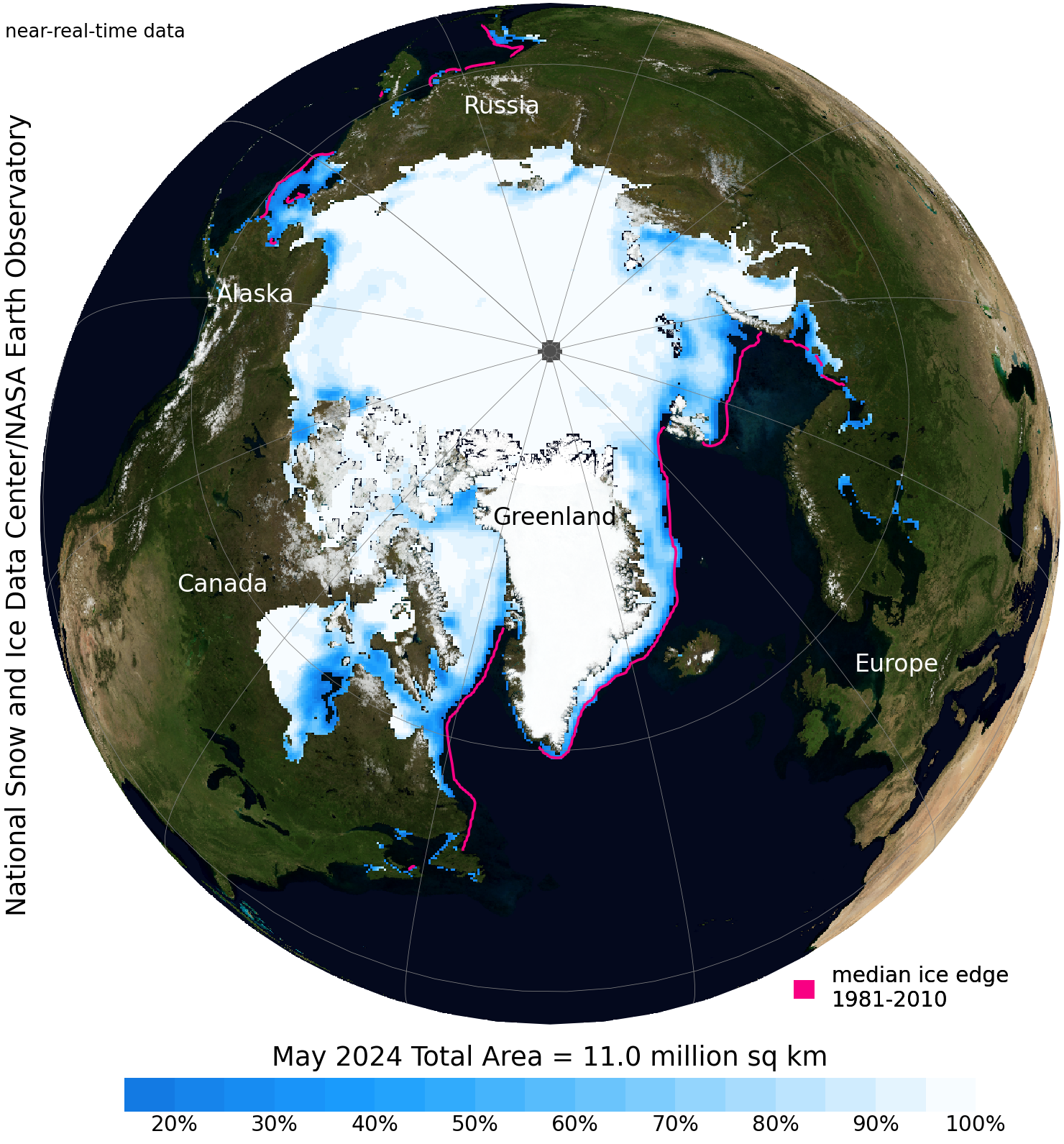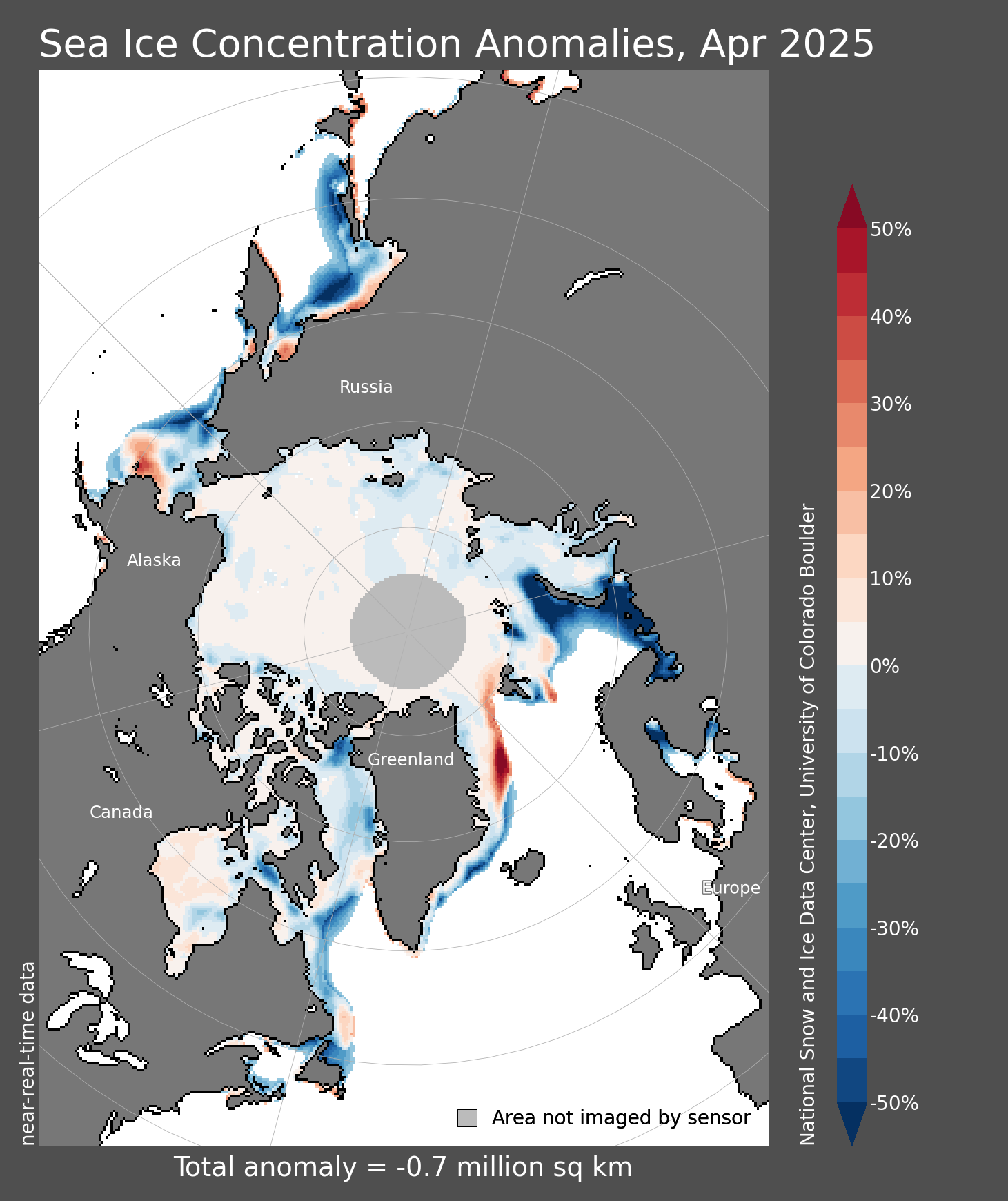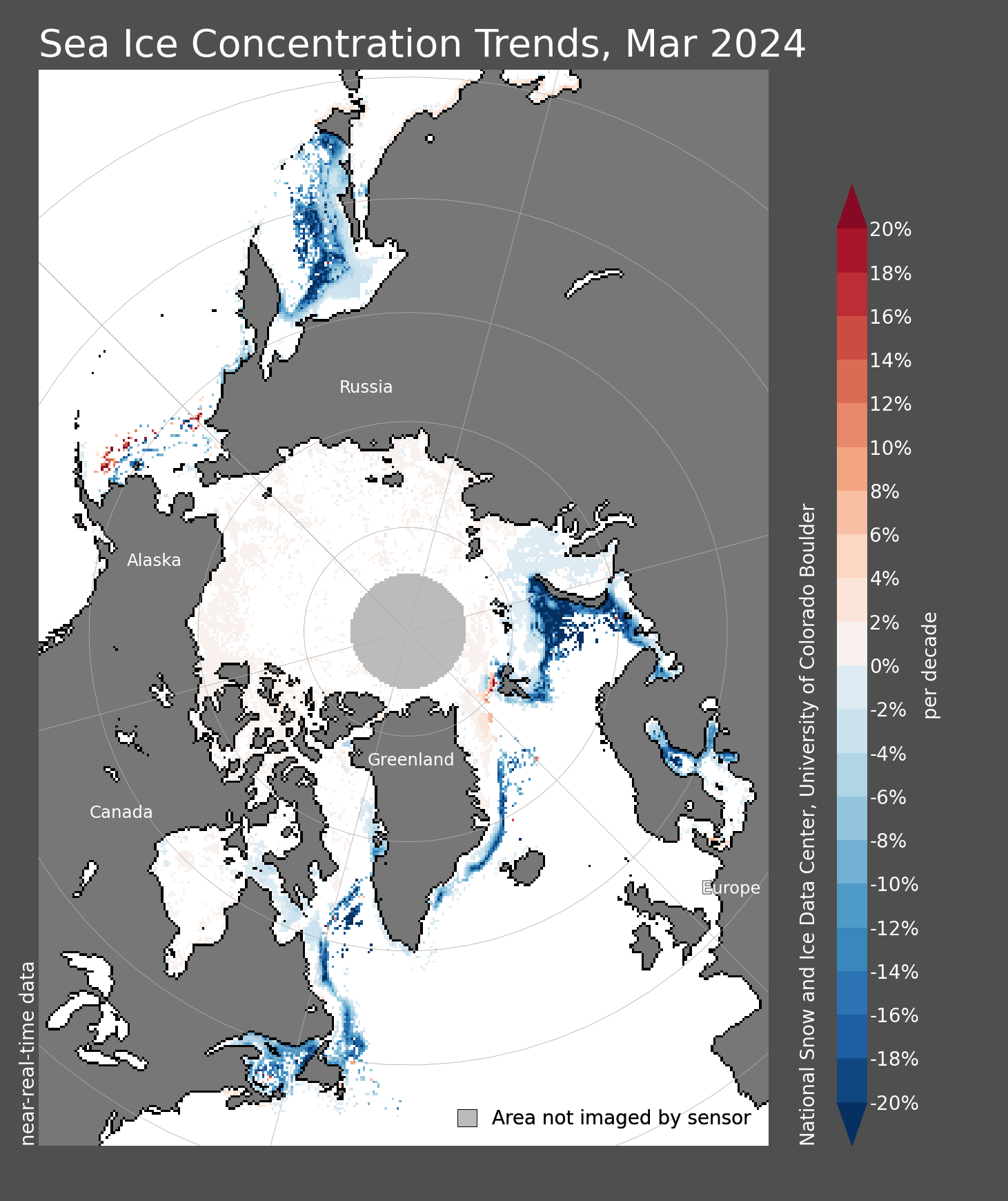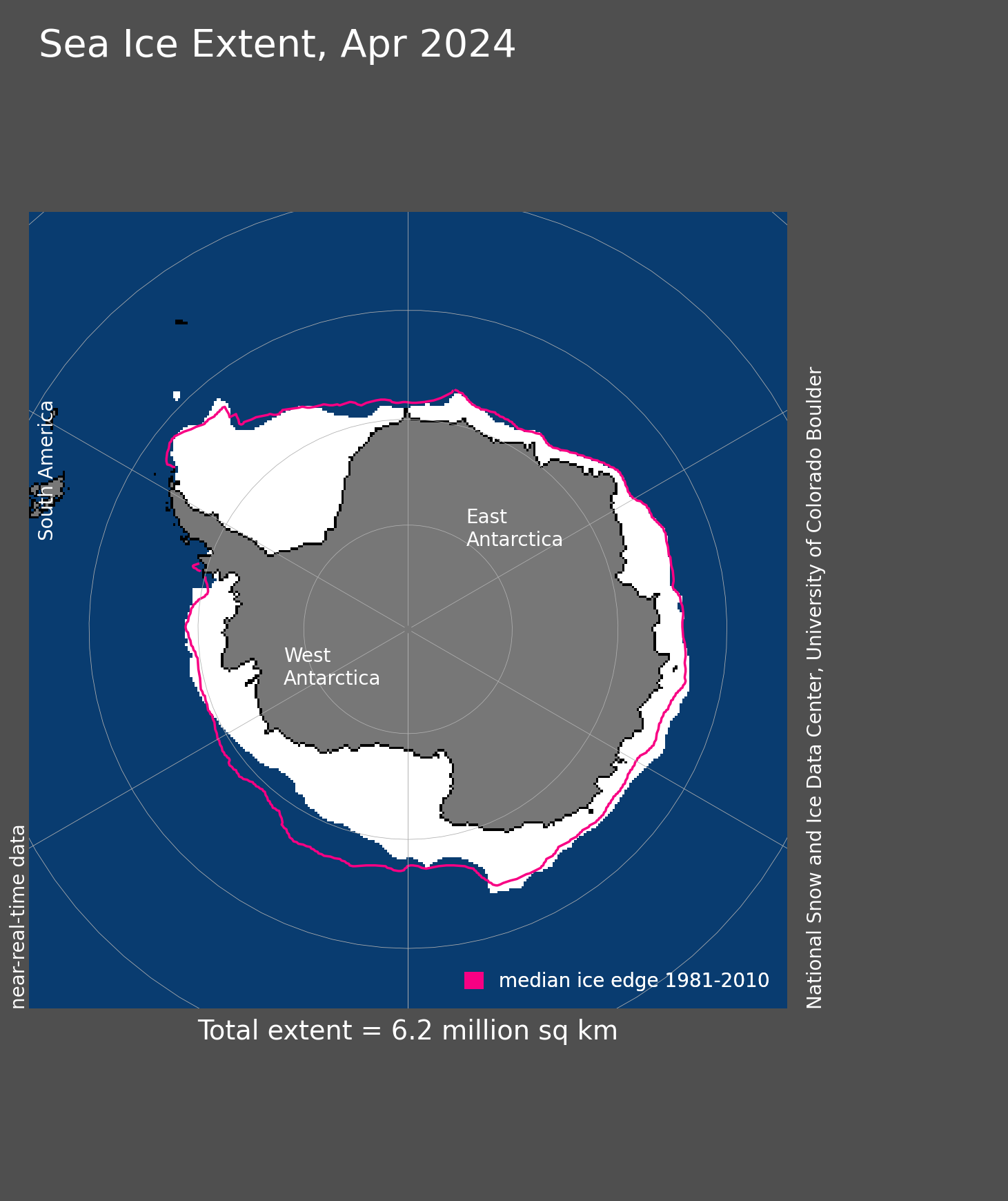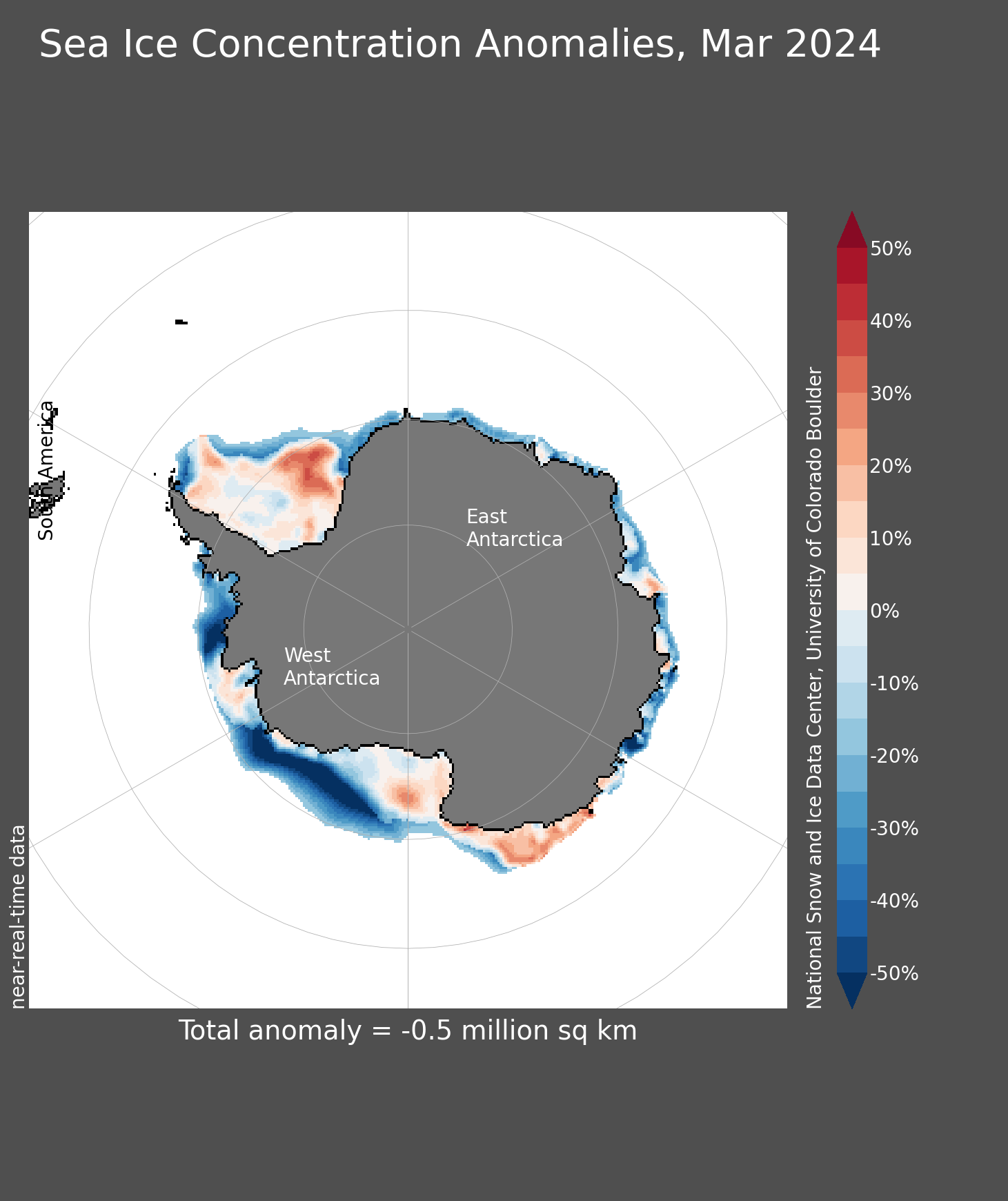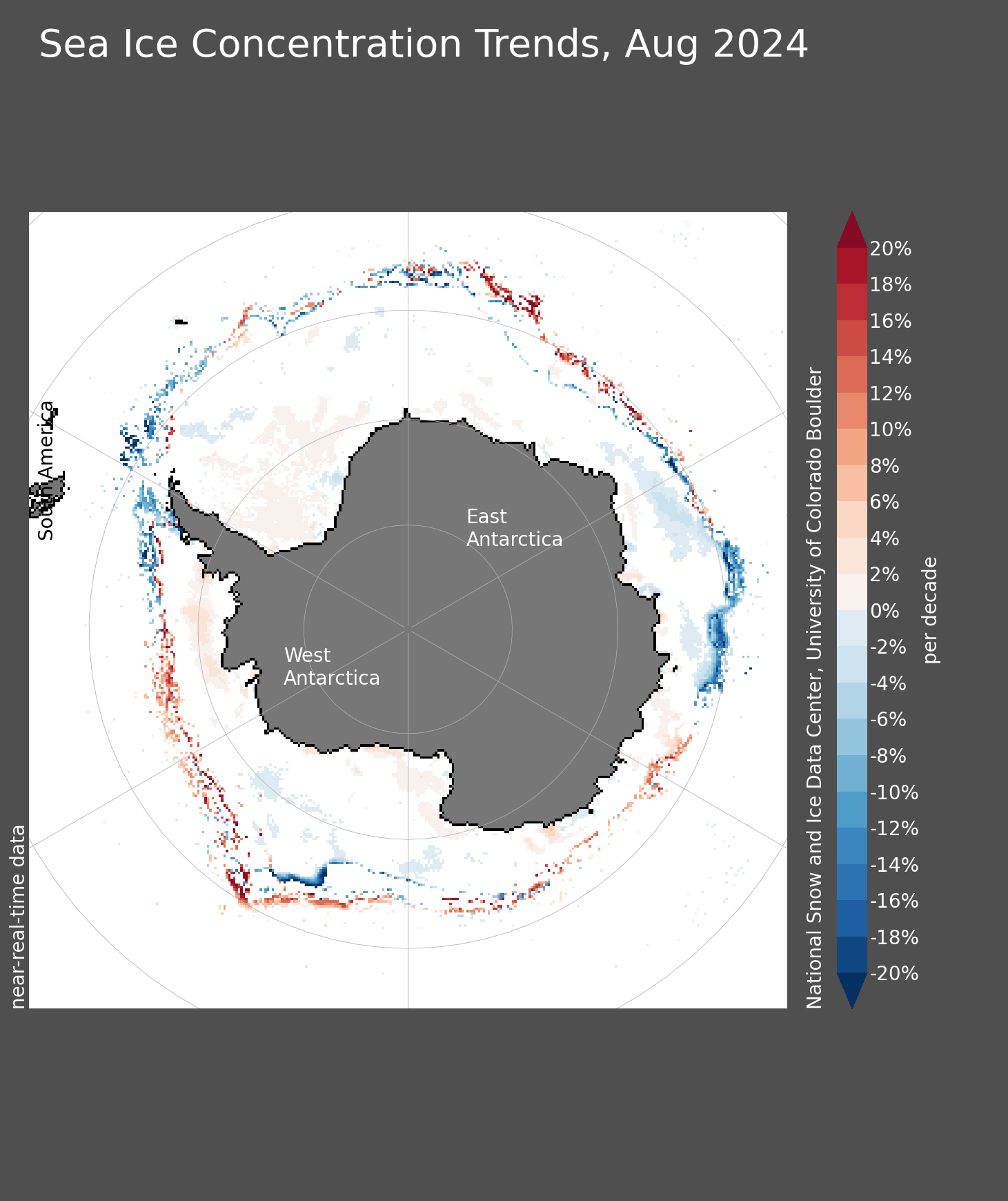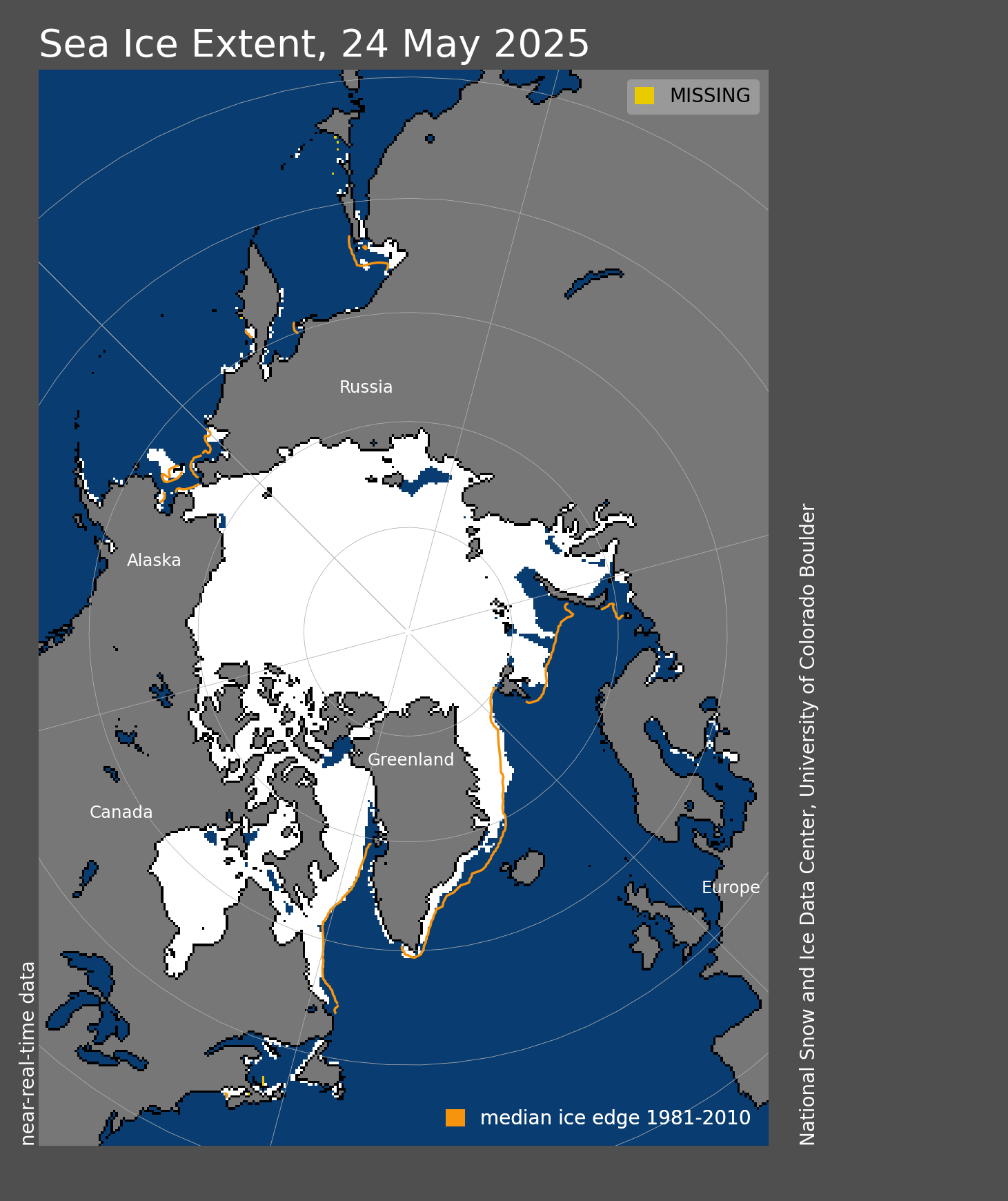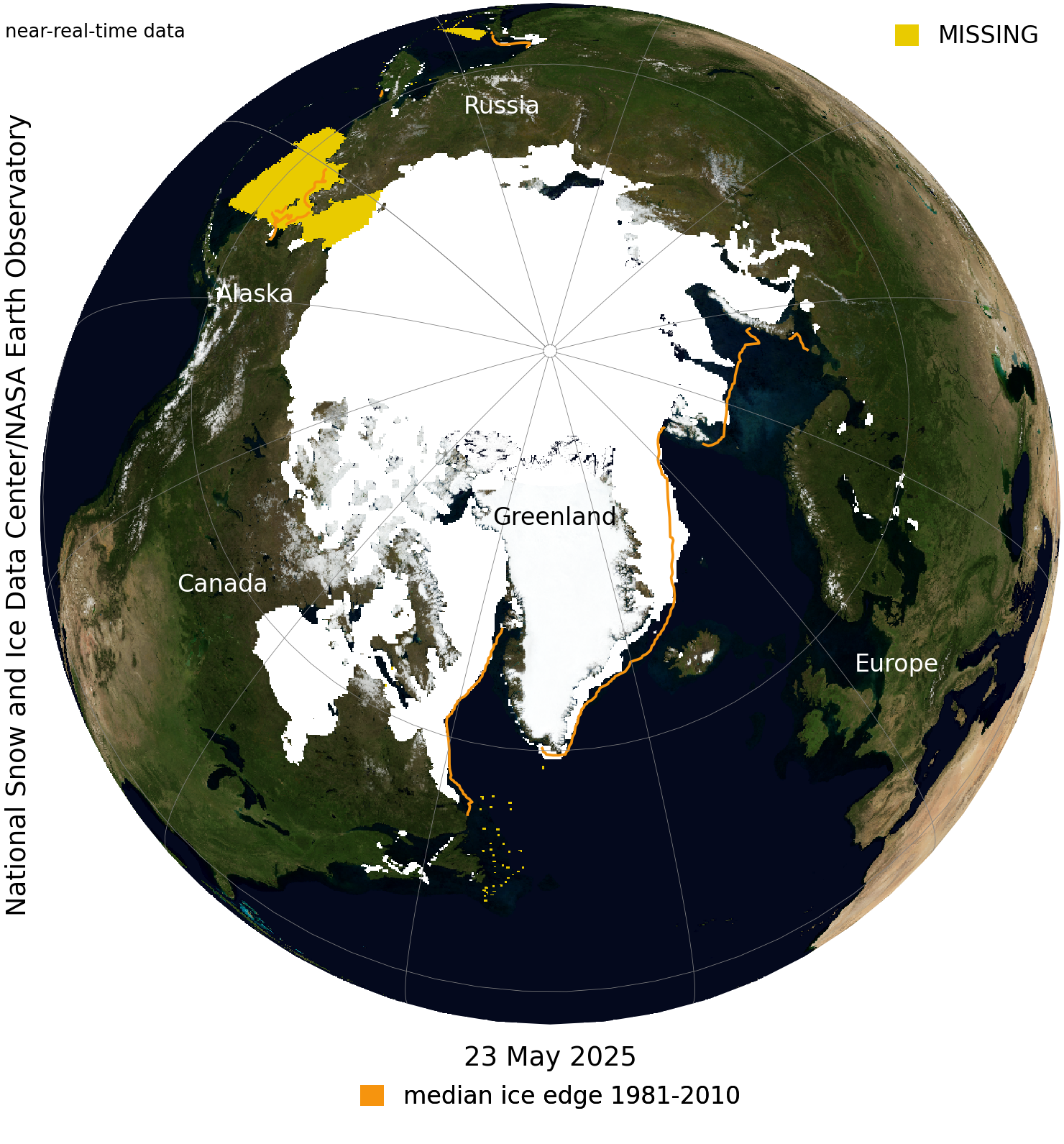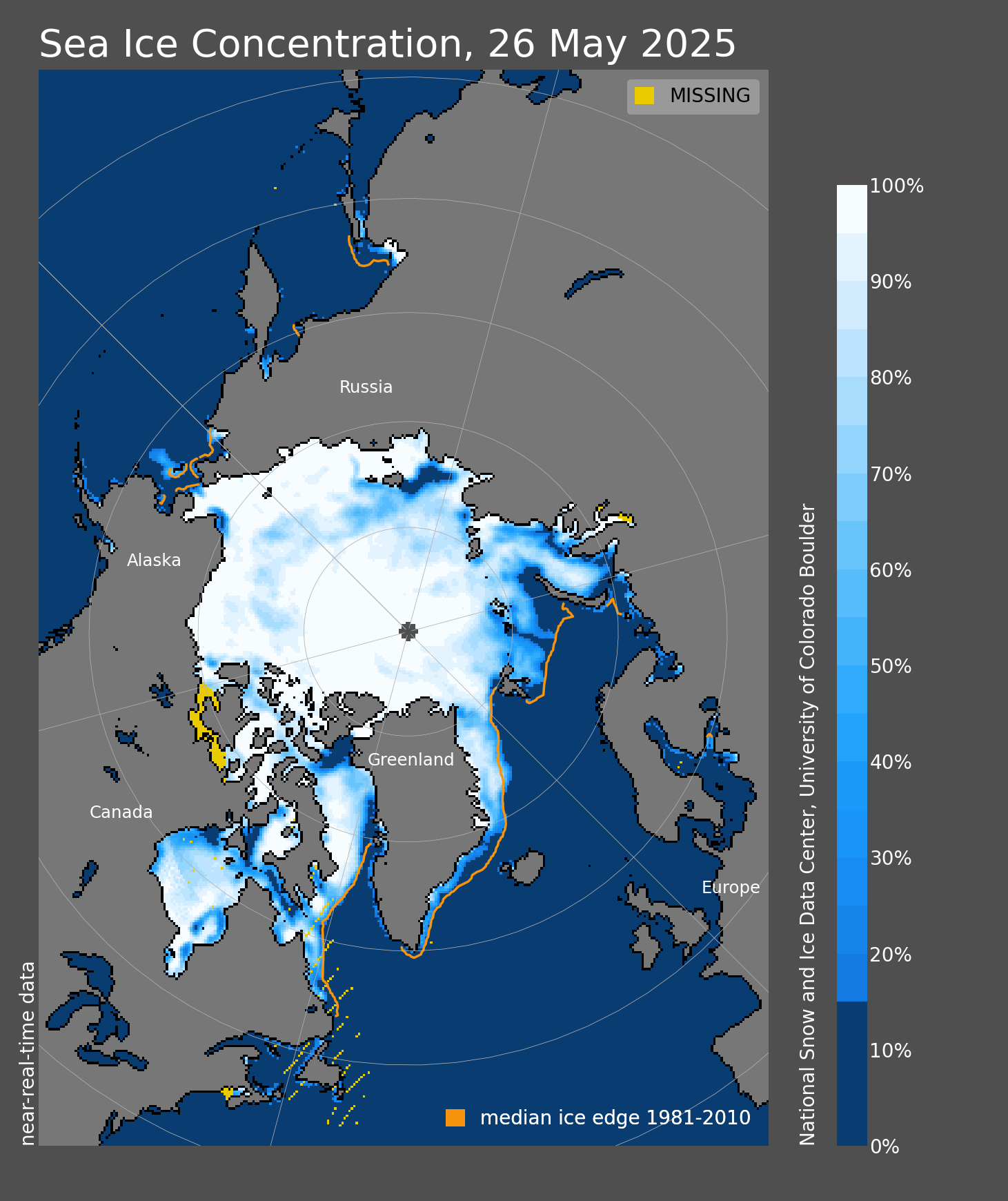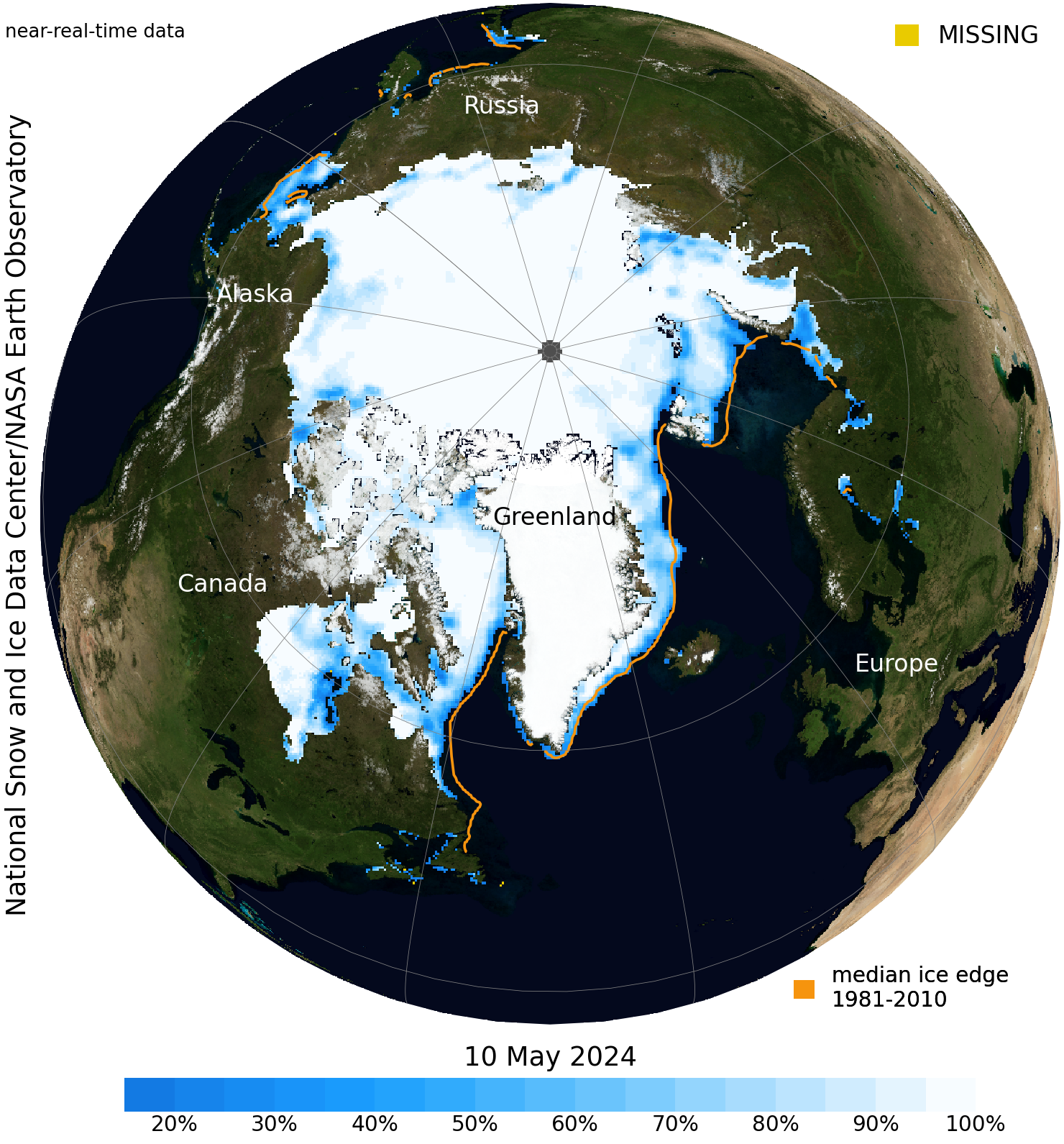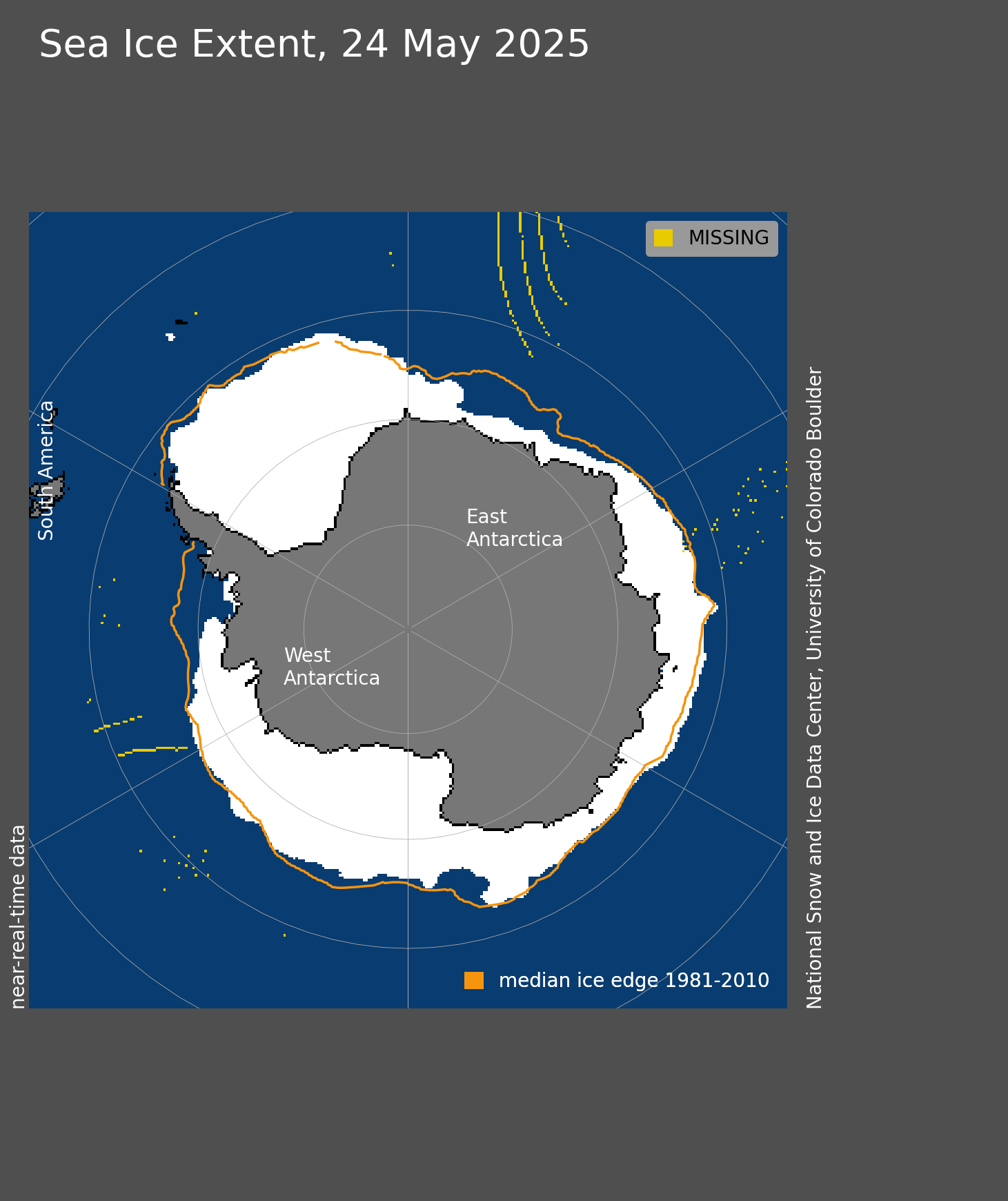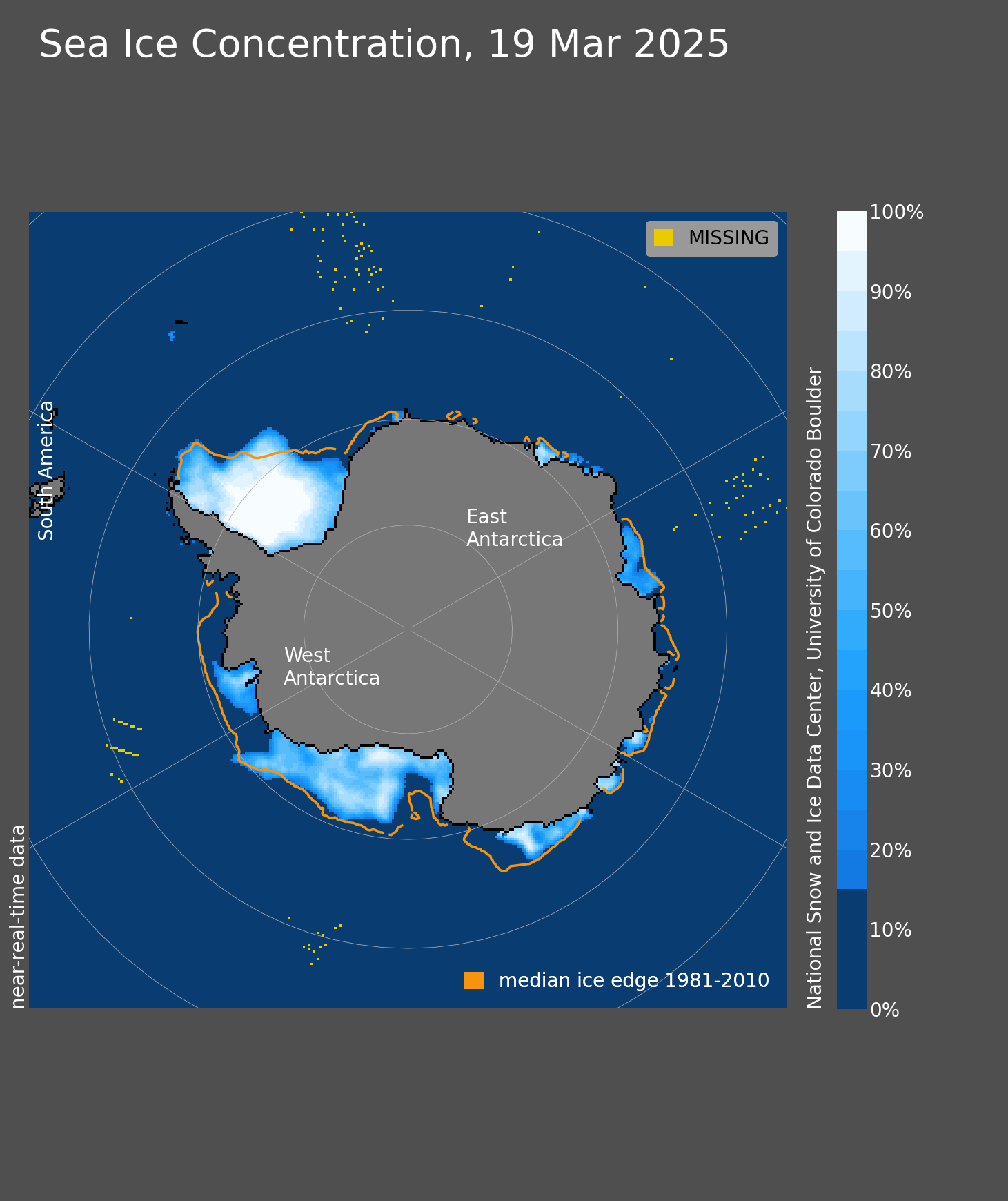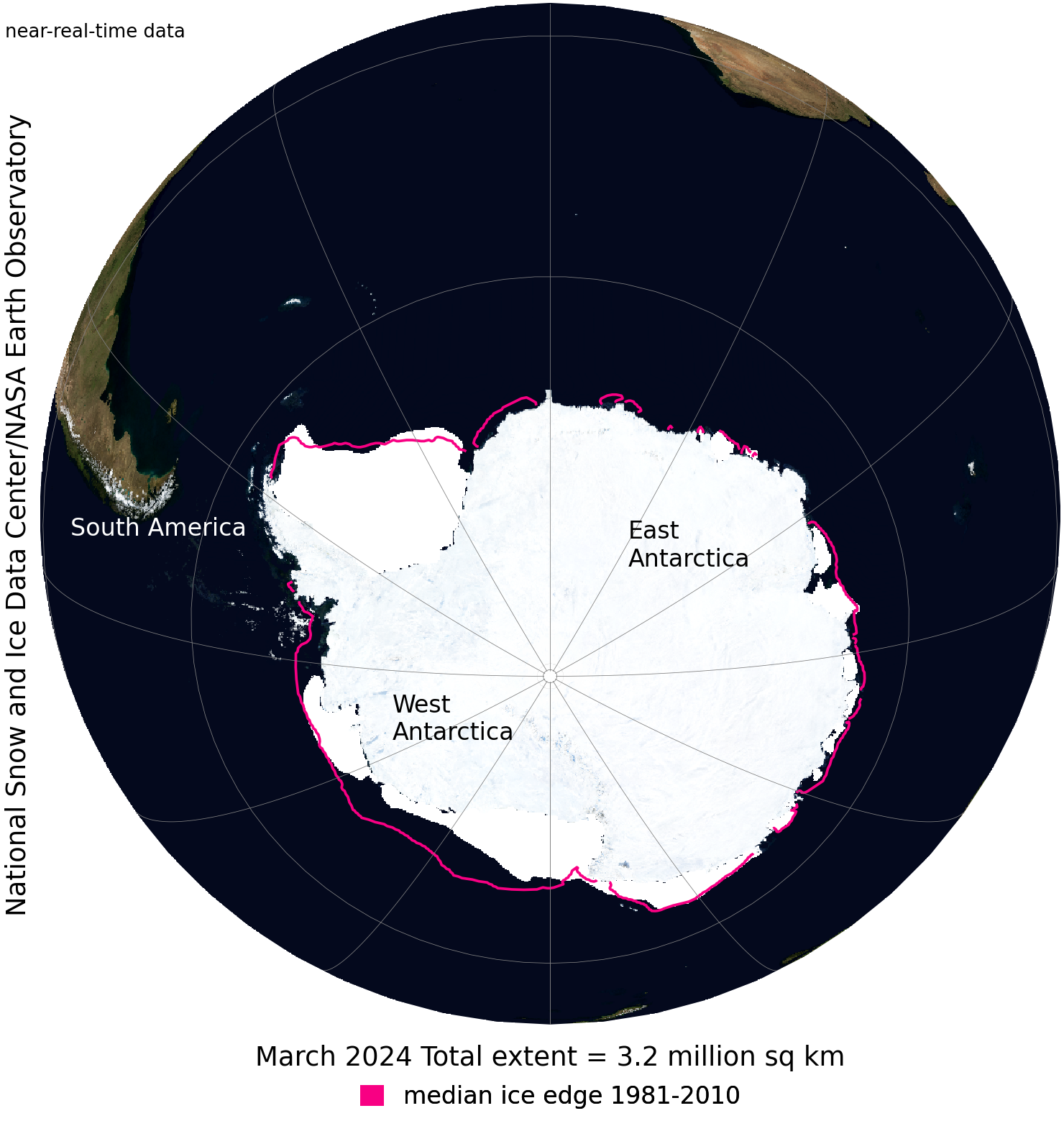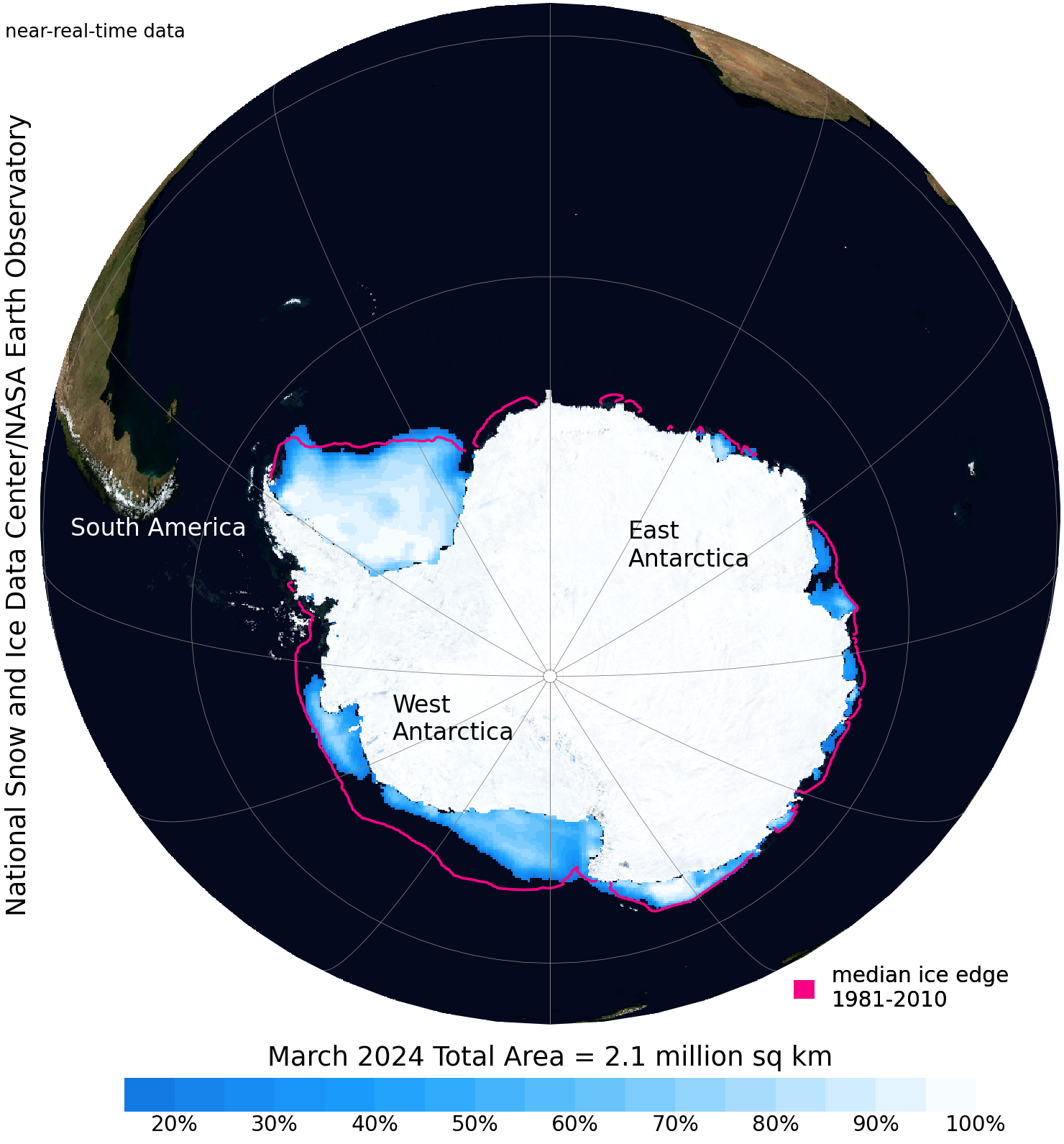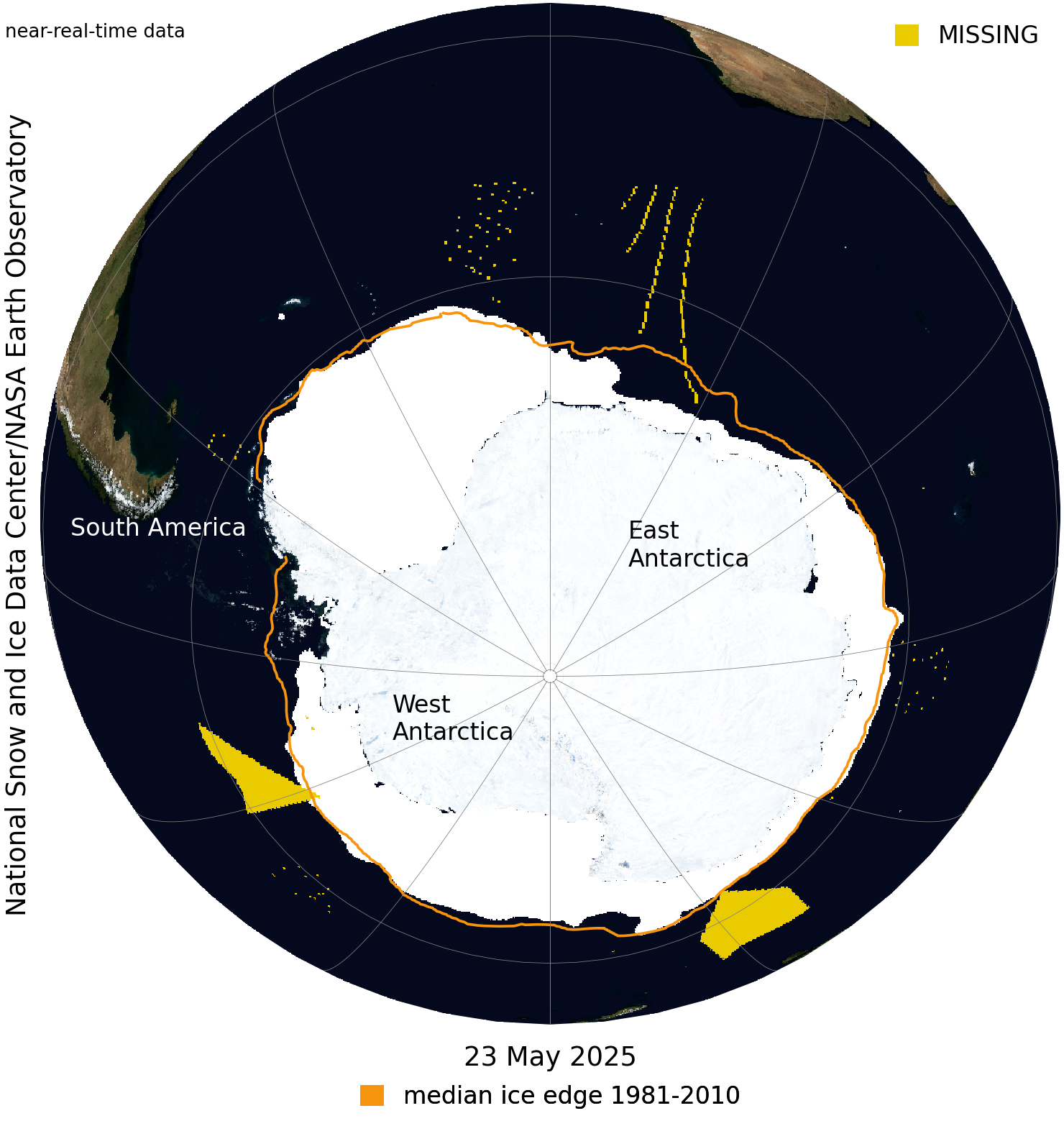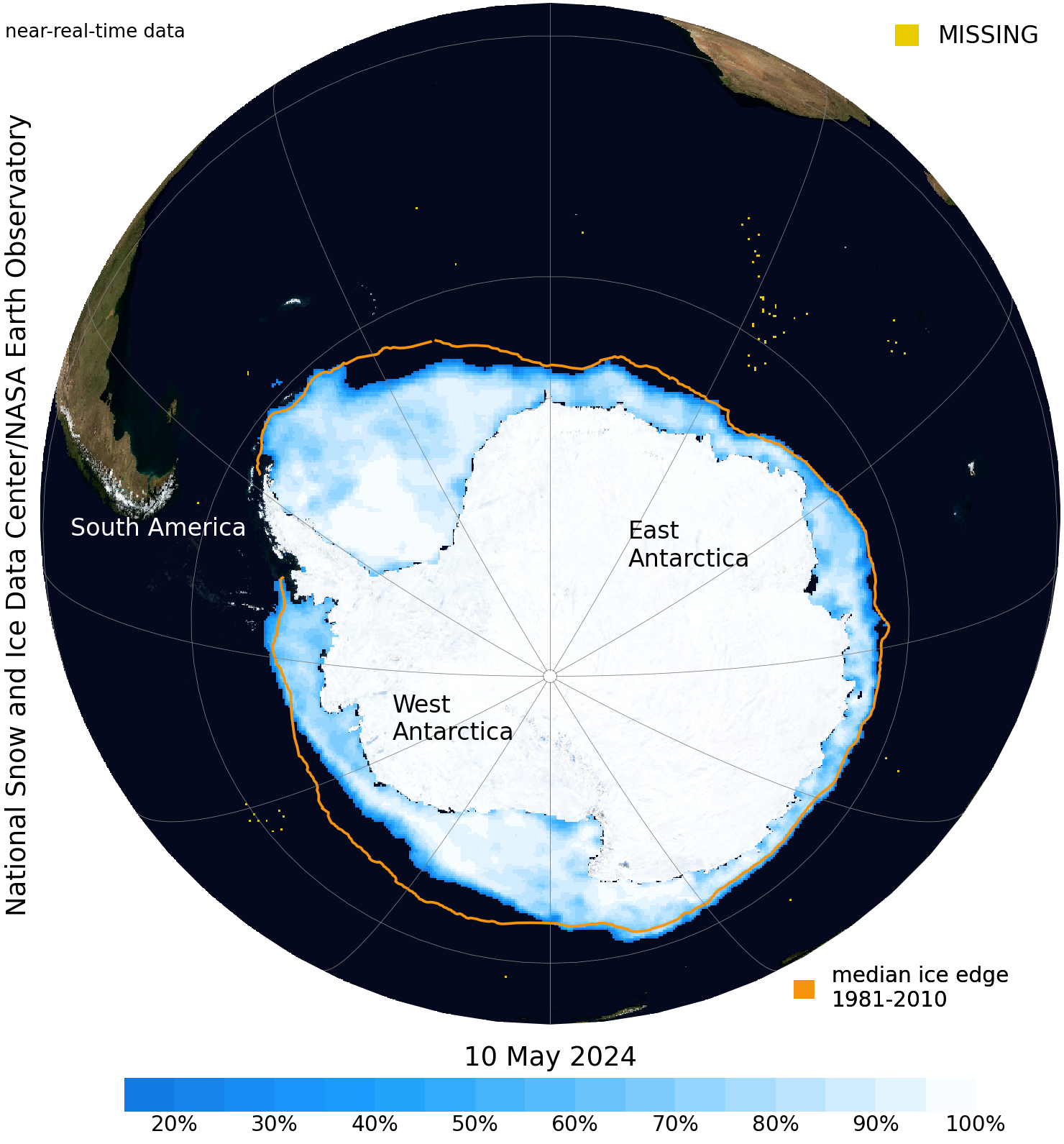
Sea Ice Index Daily and Monthly Image Viewer
Current data
- Arctic
- Antarctic
- Monthly
- Daily
The monthly Sea Ice Index provides a quick look at Arctic-wide changes in sea ice. It is a source for consistently processed ice extent and concentration images and data values since 1979. Monthly images show sea ice extent with an outline of the 30-year (1981-2010) median extent for that month (magenta line). Other monthly images show sea ice concentration and anomalies and trends in concentration.
Monthly Sea Ice Extent Anomaly Graph
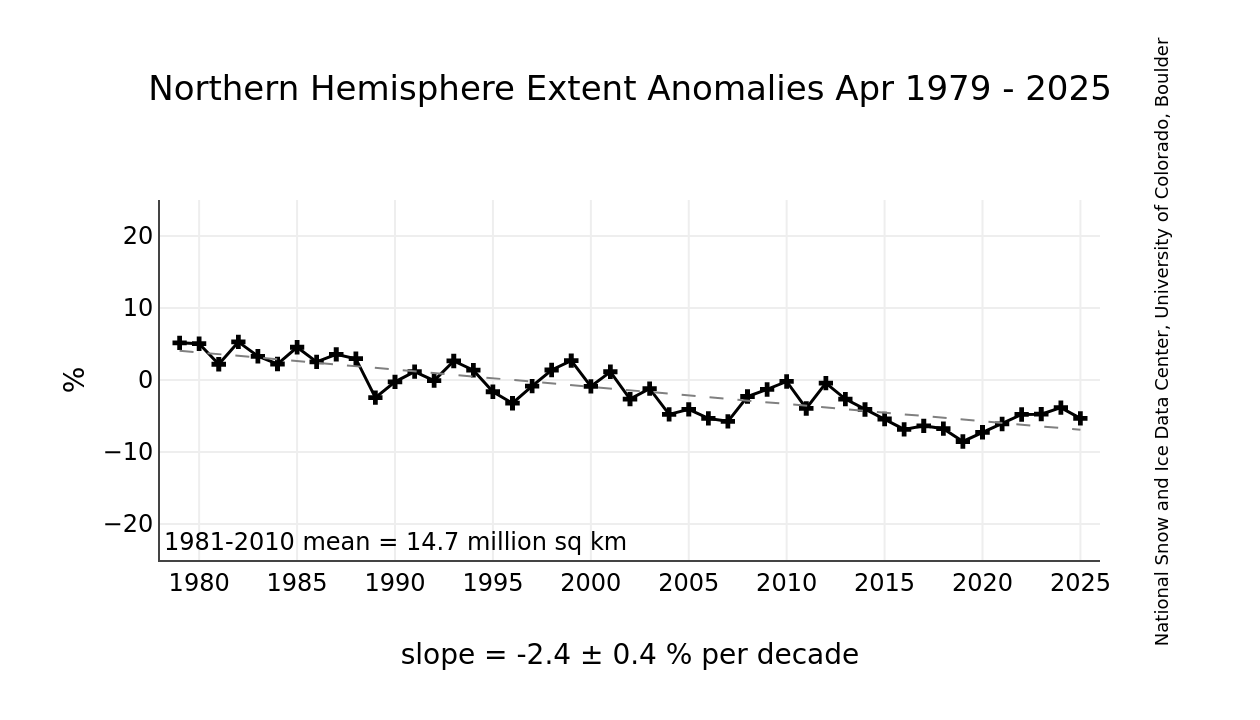
The daily Sea Ice Index provides a quick look at Arctic-wide changes in sea ice. It provides consistently processed daily ice extent and concentration images and data since 1979. Daily extent images show ice extent at concentrations greater than 15% for a given day with an outline of the typical extent for that day based on a 30-year (1981-2010) median (orange line).
Daily Sea Ice Extent Time Series
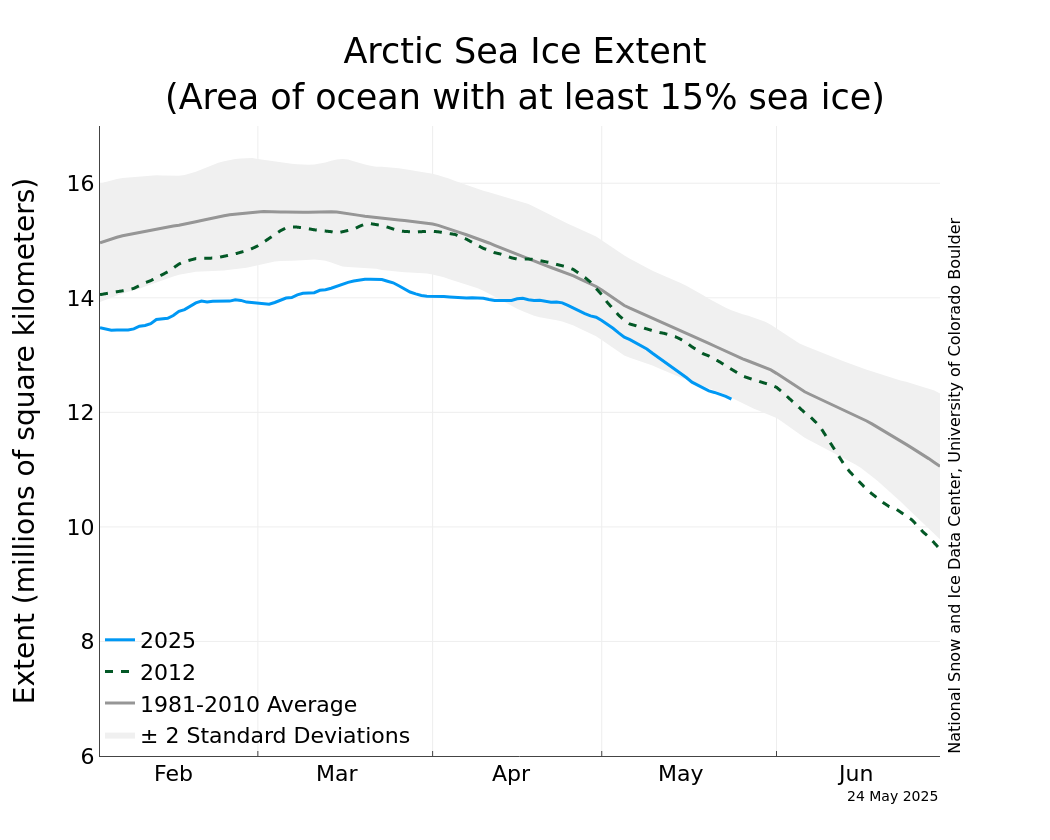
The monthly Sea Ice Index provides a quick look at Antarctic-wide changes in sea ice. It is a source for consistently processed ice extent and concentration images and data values since 1979. Monthly images show sea ice extent with an outline of the 30-year (1981-2010) median extent for that month (magenta line). Other monthly images show sea ice concentration and anomalies and trends in concentration.
Monthly Sea Ice Extent Anomaly Graph

The daily Sea Ice Index provides a quick look at Antarctic-wide changes in sea ice. It provides consistently processed daily ice extent and concentration images and data since 1979. Daily extent images show ice extent at concentrations greater than 15% for a given day with an outline of the typical extent for that day based on a 30-year (1981-2010) median (orange line).
Daily Sea Ice Extent Time Series
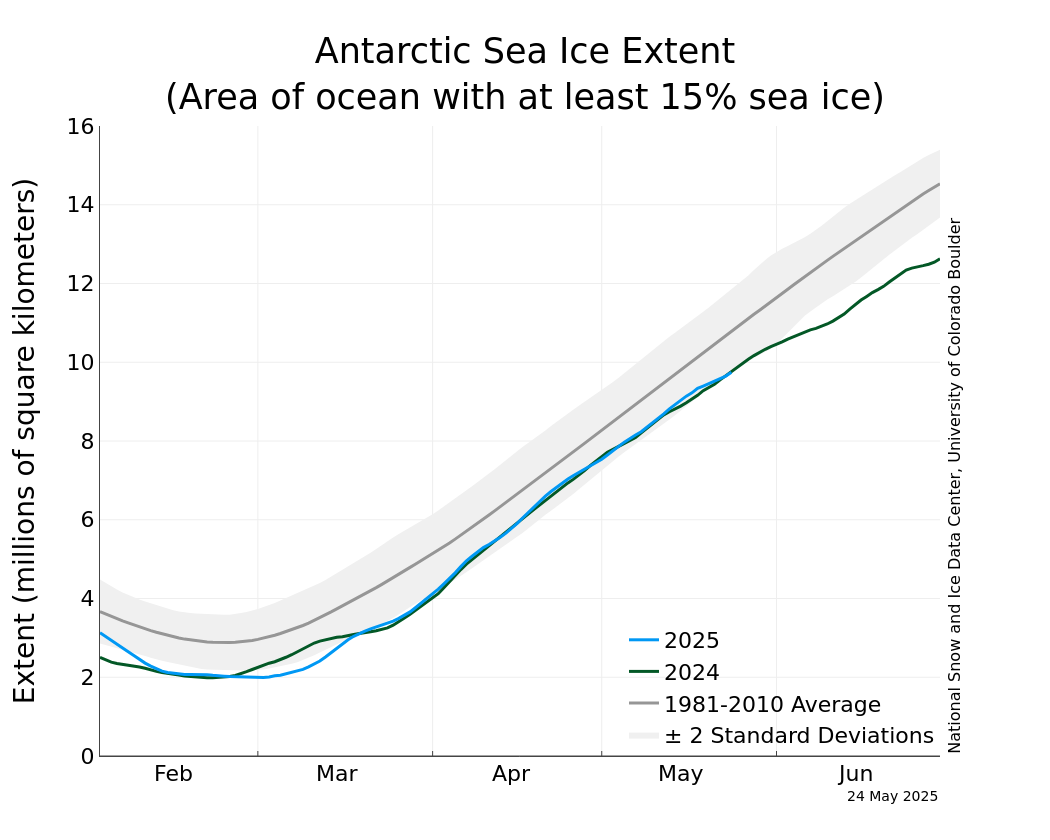
About the banner image: This photograph of sea ice was taken during the Multidisciplinary drifting Observatory for the Study of Arctic Climate (MOSAiC) expedition. The photographer, atmospheric scientist Ivo Beck, illuminated a ridge of sea ice from behind with a searchlight to produce the dramatic green/blue shine. The MOSAiC sea ice focus asks how local and regional energy exchanges are affected by changes in ice and snow. These exchanges affect what we see in larger scale monitoring tools like the Sea Ice Index.
